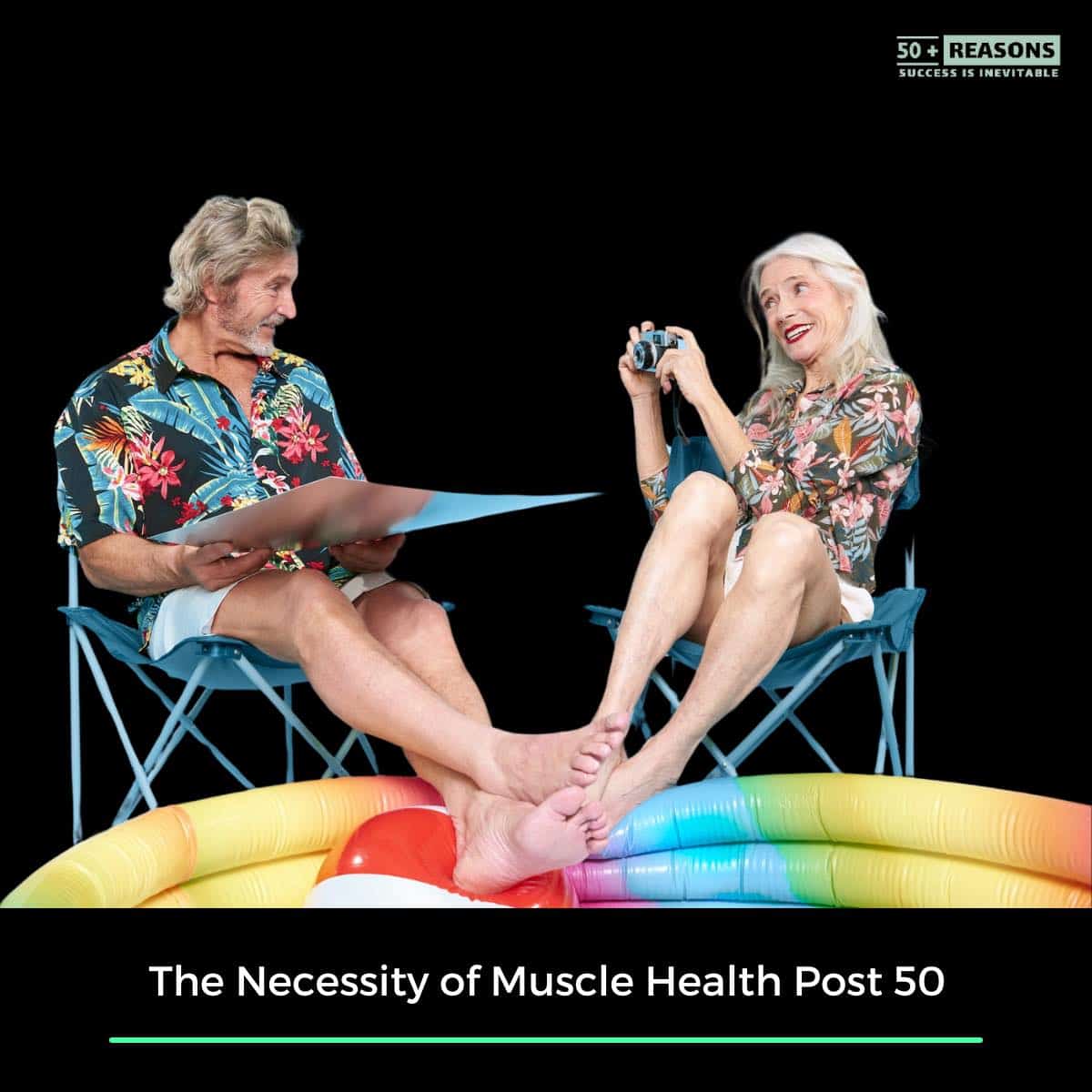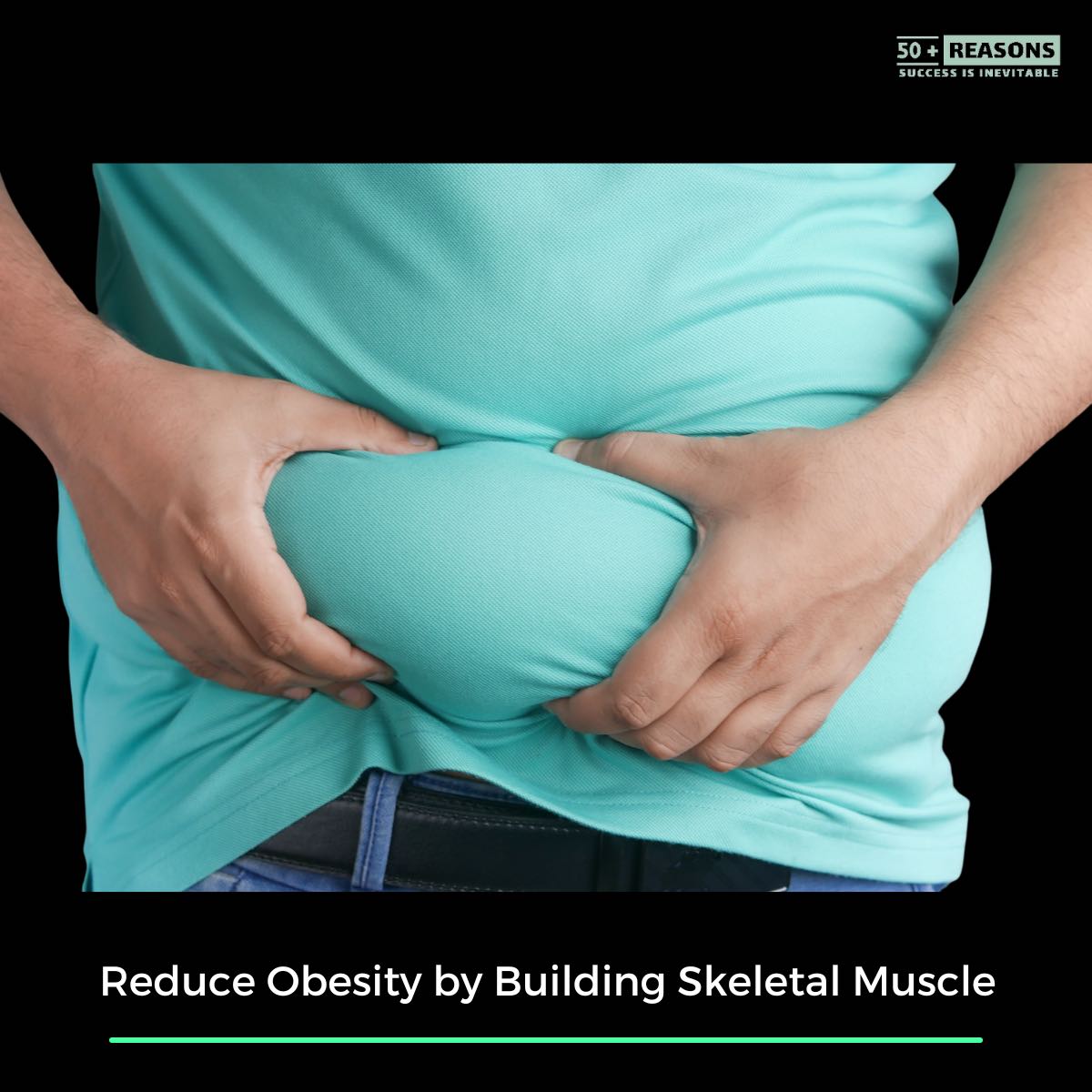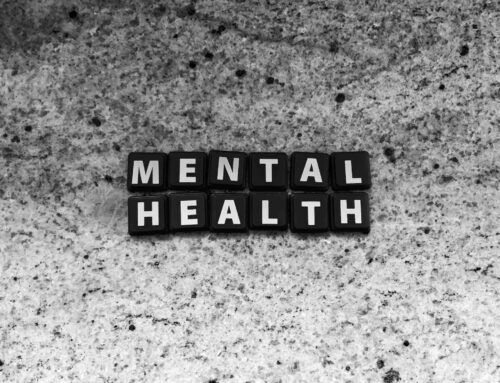Our bodies undergo numerous changes as we age, including the gradual loss of skeletal muscle mass. This may seem like a minor concern to most of us. However, Dr. Gabrielle Lyon is a board-certified, renowned physician and expert in muscle-centric medicine. Dr. Lyon explains why maintaining and building skeletal muscle becomes increasingly essential after age 50. A study done in 2022 with 43,396 participants showed that hand grip strength is a significant predictor of Metabolic Syndrome and shorter life.
This is why building skeletal muscle matters, especially after 50, if you want health and longevity.
What is Skeletal Muscle, and Can it Improve Longevity?
Skeletal muscle, also known as voluntary muscle, is responsible for our movement, posture, and overall physical strength. It is one of the body’s three major types of muscle tissue. The other two types of muscle are smooth muscle and cardiac muscle. Skeletal muscle is the muscle responsible for movement, allowing us to perform everyday activities such as walking, lifting, and bending. Unlike smooth muscle, found in the walls of organs and blood vessels, and cardiac muscle, which makes up the heart’s walls, skeletal muscle is attached to the skeleton and is under our voluntary control.
Skeletal muscle is made up of long, cylindrical cells called muscle fibers. These muscle fibers are packed with proteins called myofibrils responsible for muscle contraction. When electrical impulses from the nervous system are stimulated, these myofibrils contract, causing the muscle to shorten and generate force.
Its ability to adapt and grow in response to physical activity and exercise sets this muscle apart from other types. When we engage in strength training exercises or resistance training, the muscle fibers are subjected to mechanical stress. This causes microscopic damage to the fibers. In response to this damage, the body repairs and rebuilds the muscle fibers, resulting in an increase in muscle mass and strength.
The process of muscle growth, also known as muscle hypertrophy, is regulated by a complex interplay of factors, including hormones, nutrient availability, and exercise intensity. Interestingly, skeletal muscle makes up 40 percent of total body weight.
Attractive Advantage of Building and Maintaining Muscle

Skeletal Muscle Regulates Blood Sugar Levels
In addition to its massive role in movement and strength, our muscle is important in maintaining overall health. It is the body’s largest glucose sink. Meaning it plays a crucial role in regulating blood sugar levels. When we eat, glucose is released into the bloodstream. Muscle cells have glucose transporters on their surface, allowing them to take glucose from the bloodstream. Then use the glucose as fuel during exercise, even without insulin.
So, if you suffer from Type 2 diabetes or pre-diabetes, healthy muscle mass is even more critical for your health.
Understanding the importance of skeletal muscle and how it functions is the first step in realizing why it is crucial to build and maintain it. Especially as we age. Loss of muscle mass is more damaging than we realize. Muscle is an organ of longevity. We must protect and grow muscle if we want to live long and happy lives.
The Necessity of Muscle Health Post 50

The Necessity of Muscle Health Post 50
As we age, it’s natural for our bodies to change. Our hair might turn gray, our skin may wrinkle, and our joints may become a bit creakier. But there’s one change that often goes unnoticed yet is incredibly important for our overall health: the gradual loss of skeletal muscle mass.
You may be wondering why this is such a big deal. Dr. Gabrielle Lyon explains why muscle is responsible for so much more than just helping us look strong and fit.
Beyond just mobility, one of the main reasons why building muscle is necessary is its role in metabolic health. Muscle helps keep blood sugar levels in check and directly impacts our body fat. The more glucose disposal your muscles achieve, the lower your insulin levels will become. So, if you build muscle, you will lose weight. On top of this, insulin resistance can reversed with diet and resistance training.
Additionally, because skeletal muscle is actually a metabolic tissue, it burns a significant amount of calories even at rest. The more muscle mass you have, the more calories your body will burn throughout the day. This can help prevent weight gain and make maintaining a healthy body composition more straightforward.
Furthermore, skeletal muscle is also essential for bone health. When healthy muscle contracts, it exerts a force on the bones, which helps to stimulate bone growth and increase bone density. This is particularly important as we age, as it can help reduce the risk of fractures and osteoporosis.
When you stimulate skeletal muscle, especially after age 50, your health and wellness improve far more than the work you put in. It is about more than just looking good or being strong. It is about optimizing your overall health and well-being.
The Connection Between Muscle Mass and Metabolic Health

Muscle Mass and Metabolic Health
Let’s talk about how building and maintaining skeletal muscle can be crucial in preventing and managing diabetes, heart disease, uric acid levels, body composition, and brain function.
As we’ve learned, skeletal muscle is responsible for movement and physical strength. Dr. Gabrielle Lyon emphasizes the importance that muscle is an endocrine organ. Endocrine glands release hormones into the bloodstream. This lets the hormones travel to cells in other parts of the body. The endocrine hormones help control mood, growth, and development, how our organs work, metabolism, and reproduction. The endocrine system regulates how much of each hormone is released.
Your muscles are releasing hormones that travel throughout the body. We know that visceral fat (the fat you can’t see) is also an endocrine organ. It is dangerous because it is related to releasing proteins and hormones that can cause inflammation. This inflammation can damage your arteries, enter your liver, and negatively affect how your body breaks down sugars and fats. The proximity of the visceral fat to your liver is crucial as it can boost the production of bad cholesterol. As time passes, plaque becomes inflamed, narrowing your arteries due to swelling. These narrow passageways increase blood pressure, strain the heart, and increase your risk of blood clots.
Your amount of skeletal muscle significantly impacts your metabolic health, including the regulation of blood sugar levels. If you see your muscle as an organ that fights the damaging effects of inflammation, you start to see that muscle is essential.
Regular exercise and, importantly, resistance training will build skeletal muscle.
Strategies to Reduce Obesity and Build Skeletal Muscle

Reduce Obesity by Building Skeletal Muscle
Building and maintaining skeletal muscle becomes increasingly important after the age of 50. Almost critical above the age of 65. But how can we go about doing this? Dr. Gabrielle Lyon, an expert in muscle-centric medicine, provides valuable strategies to build skeletal muscle for optimal health.
Forever Strong
Resistance Training: One of the most effective ways to build and contract skeletal muscle is through resistance training. This involves using weights or resistance bands to create resistance against the muscles, stimulating skeletal muscle health and growth. Dr. Lyon recommends incorporating resistance training exercises at least three days a week. Focus on compound exercises if you are experienced. These movements target multiple muscle groups, such as squats, deadlifts, bench presses, and rows.
If you have never been to a gym, find a good trainer to help you slowly build up to these exercises. Remember, gym or resistance training needs to be fun and achievable. Don’t kill yourself, and open yourself up to injury early on. This is why an experienced trainer can initially be worth their weight in gold. Exercising skeletal muscle is easier than you think. YouTube and experienced trainers help you think about skeletal muscle growth and the importance of a muscle first mindset.
Progressive Overload
To continue building skeletal muscle, progressively increasing the intensity of your workouts over time is important. This can be done by increasing the weight you lift, the number of repetitions you perform, or the number of sets you complete. This gradual increase in intensity challenges the muscles and promotes muscle growth. On days you aren’t resistance training, go for a reasonably brisk walk. This way, you soon end up training five days a week. It won’t be long till you are close to your ideal body weight if you incorporate walking into your routine. Any weight loss is a win. Research shows that weight loss and muscle growth inevitably allow you to live longer.
Unhealthy skeletal muscle mass directly correlates to not only a shorter life but also one with frequent hospital visits.
If we are going to talk about health, we must talk about skeletal muscle first. Muscle is the organ that can make a massive difference to your health. Keep focused on muscle growth.
Get the Protein Up and the Body Fat Down
A good diet is crucial for building and maintaining skeletal muscle when we talk about protein. Protein is essential, providing the building blocks for muscle growth and containing 20 different amino acids. Dr. Lyon recommends consuming high-quality dietary protein sources, such as lean meats, poultry, fish, eggs, and plant-based proteins like legumes and tofu. Aim for a protein intake of about 0.8-1 gram per ideal kilogram of body weight per day. Or around 0.4g per pound ideal body weight.
On the Gabrielle Lyon show, Dr. Lyon suggests 1.2 to 1.6 grams of protein per kilogram of your weight daily. This is more gram per pound of body weight in protein than you probably eat now. Target skeletal muscle growth with what and when you eat. Dr. Lyon says most women eat less protein than their bodies need. For muscle protein synthesis to occur, essential amino acid is required.
So, to stimulate muscle protein synthesis, you may need supplements like good quality isolate whey protein. Creatine has also been shown after literally thousands of studies to improve skeletal muscle health. Do the research, and you will see that a heavy protein diet is healthy and necessary to improve your lean muscle. Remember, the way in which you age depends mainly on your strength. Take a step back and assess what is important in your later years. Having more energy, feeling happier, and having less brain fog are just as important as living longer. These beautiful advantages will depend on resistance training and getting enough grams of protein per meal.
Adequate Caloric Intake
To build skeletal muscle, your body needs enough energy to fuel the muscle-building process. Ensure you consume enough calories to support your activity level and muscle growth. Dr. Lyon suggests consulting a registered dietitian or nutritionist to determine your caloric needs. Muscle is a nutrient sensing organ. Specifically, skeletal muscle is a nutrient sensing organ and needs the correct nutrients to grow. Muscle mass and function can only improve if you eat enough of the right foods.
Don’t be worried about your overall body mass. You should be more concerned with your body composition. There are machines that directly measure skeletal muscle. Even a little muscle growth will make a difference in your metabolic health.
Rest and Recovery
Building skeletal muscle requires balancing between challenging your muscles and allowing them to rest and recover. Adequate rest and recovery time are essential for muscle repair and growth. Make sure to incorporate rest days into your exercise routine and prioritize sleep for optimal muscle recovery. When the workout isn’t working anymore, maybe you are not giving your body enough time to rest and recover.
If you are resistance training, split up your workouts so you do a few muscle groups each day. For example, you train legs and traps in the first training session. In the second training session, do chest and back. In the third training session, you do shoulders and arms. Look to do around 9 sets per muscle group each week. Make sure you add rest days. On rest days, go for a half-hour walk. Protect skeletal muscle at all costs.
By incorporating these strategies into your lifestyle, you can effectively build and maintain skeletal muscle, improving overall health and well-being. Remember, building skeletal muscle after 50 is not just about looking good; it’s about optimizing your health for a stronger, healthier body. Keep your body strong until the end of life.
The Advantage of Skeletal Muscle in Older Age

The Advantage of Skeletal Muscle in Older Age
The health of skeletal muscle and maintaining and building skeletal muscle becomes increasingly essential as we age. Its advantages are especially crucial in older age. Skeletal muscle is not just about looking strong or being physically fit; it is vital in optimizing our overall health and well-being.
- One significant advantage of having skeletal muscle in older age is improved mobility and independence. Skeletal muscle is responsible for movement, allowing us to perform everyday activities such as walking, climbing stairs, and carrying groceries. Maintaining and building skeletal muscle can enhance our mobility and reduce the risk of falls or injuries that can limit our independence.
- Another advantage is the positive impact skeletal muscle has on metabolic health. Lean muscle burns a significant amount of calories even at rest. This can help with elevated levels of triglycerides in our blood. Muscle helps prevent weight gain and obesity. Which are major risk factors for chronic diseases such as heart disease, diabetes, and certain types of cancer. Building and maintaining muscle can boost our metabolism and promote a healthy body composition.
- Additionally, muscle is essential for bone health. When muscle contracts, it exerts force on the bones, stimulating bone growth and increasing bone density. This can help reduce the risk of fractures and osteoporosis, common concerns as we age. Building and maintaining muscle can support our bone health and maintain strong, resilient bones.
- Furthermore, muscle is crucial in glucose regulation and insulin sensitivity. Muscle is the body’s most significant glucose sink. Muscle is full of glucose. It helps regulate blood sugar levels by taking glucose from the bloodstream and using it as fuel during exercise. If you build skeletal muscle, insulin resistance starts to fade away.
In Conclusion:
Overall, the advantage of having skeletal muscle in older age is the potential for a higher quality of life. Building and maintaining skeletal muscle can enhance our mobility, support our metabolic health, improve our bone health, and reduce the risk of chronic diseases. So, don’t let age deter you—start incorporating strategies to build skeletal muscle today and unlock the benefits of a more muscular, healthier body in your older years.
Free
Great for Beginners
What’s Included
Learn how Options work.
Start to take charge of your savings





